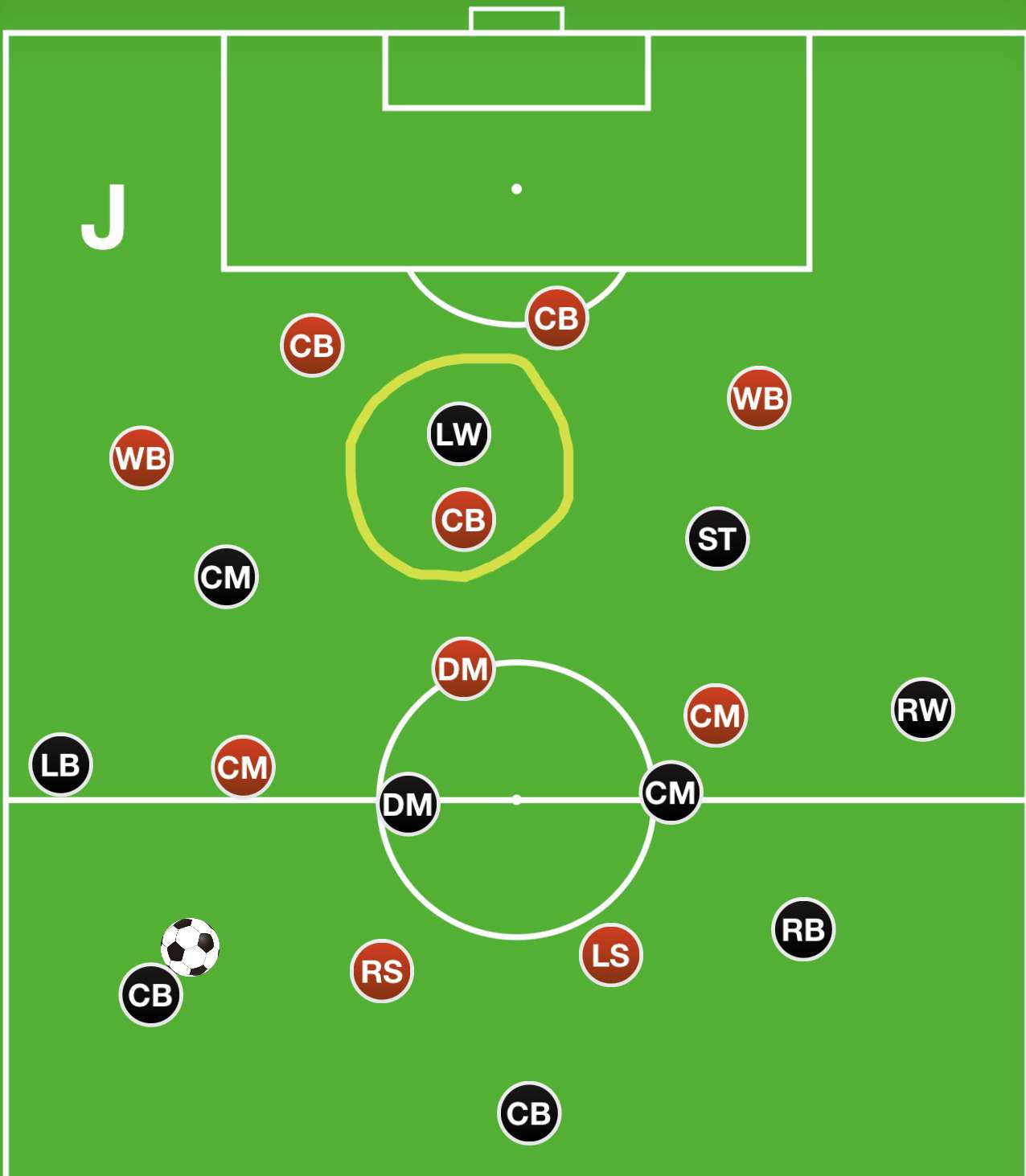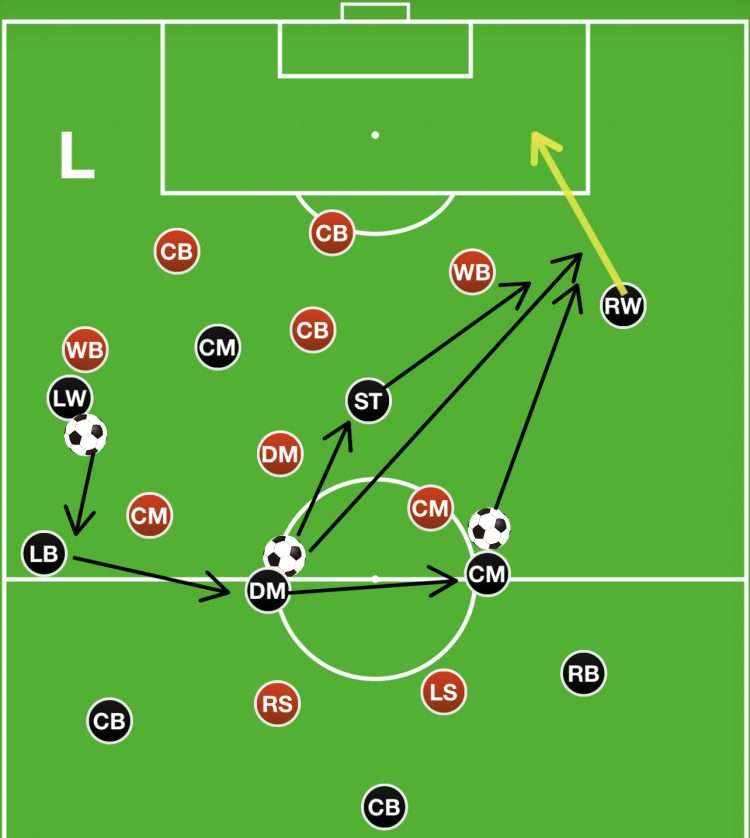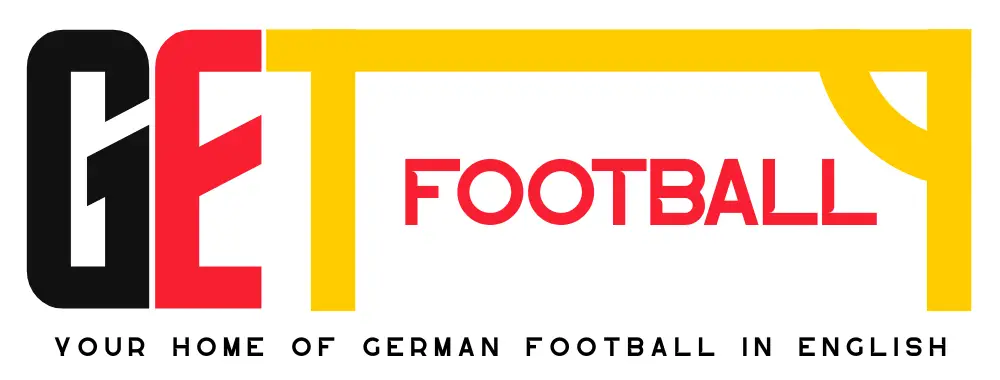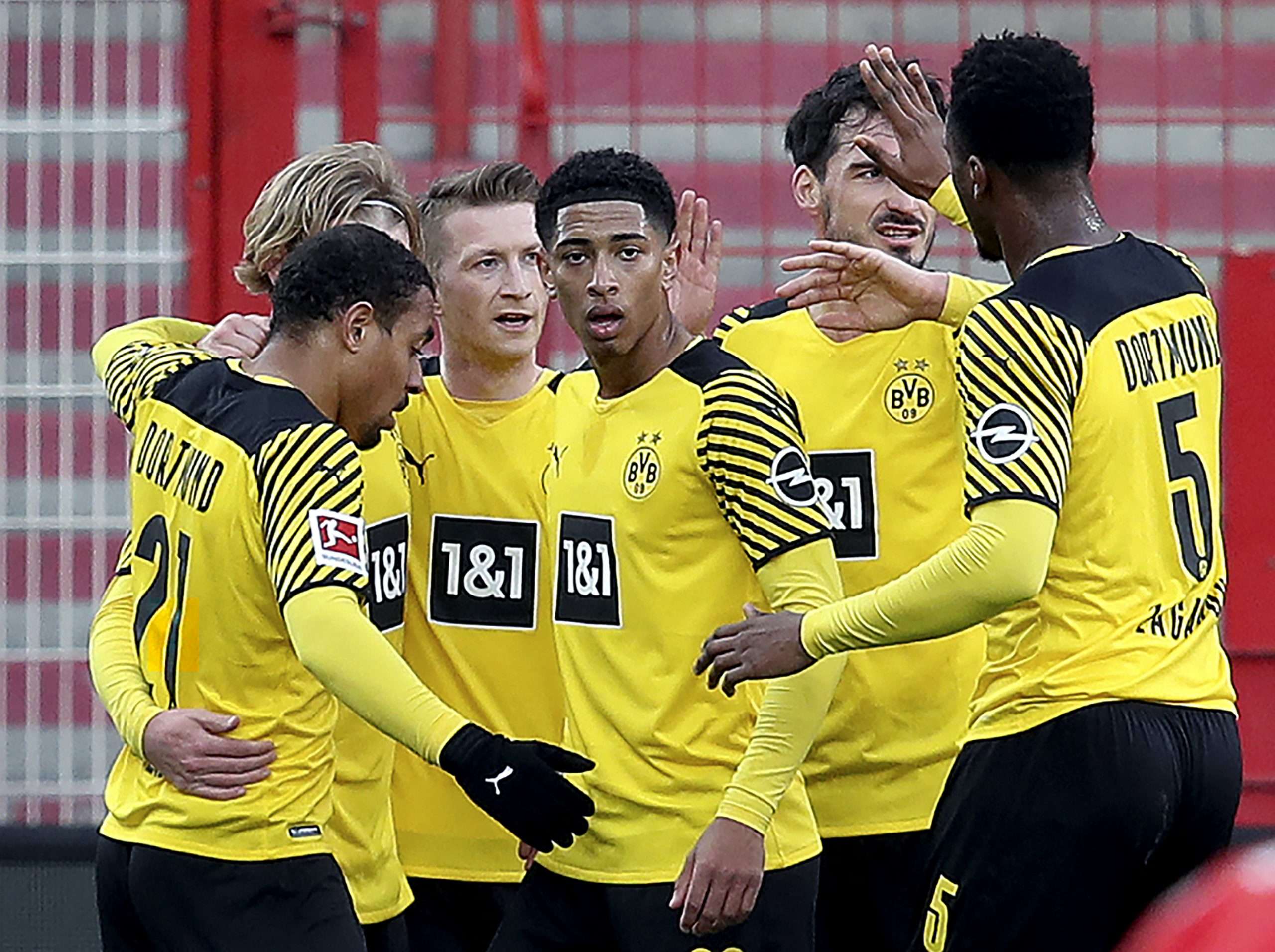The following analysis dives deep into what was a dominant display by Borussia Dortmund. Beating Union Berlin 3-0, it was a performance that saw Marco Rose’s philosophy take shape. Characterised by quick, one-touch, possession-based football, Dortmund showed promise of what is to come under Rose.
Tactical Mechanics
Sunday’s top four clash saw a tactical battle between BVB’s 4-3-3 (black) and FCU’s 5-3-2 (red). From the get go, it was an even match-up between both teams’ midfield (3v3) (A). Equilibrium which prevented Dortmund from building play centrally and saw them progress play via wide areas instead. How was this done? Firstly, BVB implemented a 3-4-3 in ball possession, which saw them succumb to a numerical disadvantage in central areas (3v2) (B). Why was this done? Because it allowed them to take capitalise on Union Berlin’s narrow midfield 3 and establish a 2v1 advantage in wide areas as such (C). This allowed BVB to beat Union Berlin’s 2nd line of defence with relative ease, giving them easy access to their last line.



At this point, wide overloads usually see ball-progression up to the flanks at which crosses are sent into the box. However, this was not the case this game. Why? Because Union Berlin’s back 5 provided great width which prevented wide threats into the final third (D). Fortunately, for BVB, Union Berlin’s midfield 3 pressed highly, which saw space open between the lines for attacks to continue (E). It is at these areas where BVB caused havoc. Here, they dedicated several numbers forward, creating a central overload between the lines to facilitate chance creation into the final third (F). This is how Reus scored his first goal, through quick interchanges which made for a fantastic viewing.



Such football has been a staple in Marco Rose’s career, a philosophy which is finally taking shape at Dortmund. What sets the stage for such “tiki-taka” to take place? It is the abundance of players in close relation to each other which facilitates quick short-passes. Rose’s men not only do so in the final third, they play quick, one-touch football in build-up also, were they use 5-6 players in their wide overload (G) as opposed to standard 4 (H).


How did Union Berlin respond to this? They changed to a 4-1-3-2 in the 2nd half where one of the CBs acted as a make-shift CDM (I). The purpose of this was to reduce space between the lines (J), and to add additional support vs BVB’s wide overload (K). This neutered BVB’s threat in wide and central areas upon entrance to the final third.



These extra numbers also allowed Union Berlin to counter on several occasions however, it did not amount to much in the end. Due to BVB’s quickness of play, they were able to escape Union Berlin’s wide press, via quick switches into space (L). Space that was created as a result of aggressively pressing BVB’s wide overload to win the ball.

All in all, today’s performance was a contrast in class when it came to speed and accuracy of play, a contrast which saw Dortmund to a dominant victory with many positives to take after last week’s defeat vs Leverkusen.
By Ryan Gunness.










